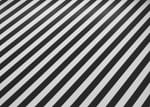Last season in the NHL there were 21 players that broke the 200 hit plateau. The only Leaf to do so was Luke Schenn with 206. Of those 21 players, only 7 were defensemen. More impressive was the fact that Schenn hit that height in only 70 games played, the lowest number of games for any of the players in the category.
200 hits in an 82 game season translates to 2.44 hits per game, so it had been a bit disappointing for the Leafs coaching staff and management this year to see Schenn sitting at 2.05 hits per game entering the trading deadline.
Entering the 2009-10 season, one of the key areas of improvement the Leafs had targeted was an increase in physical play in their own end. To some extent that had been addressed by the addition of Mike Komisarek, who was delivering the body at a rate of 2.5 hits per game, and Garnet Exelby who was adding 1.67 hits per game in limited ice time. Unfortunately Komisarek was injured, and Exelby wasn't trusted with enough ice time for the impact to sustain itself.
Enter Dion Phaneuf. Offensively skilled enough to play a larger role than Exelby, Phaneuf's physical play would add to the overall grit factor on the Leafs D. His presence alone was hoped to be a positive influence on the likes of Schenn, and he hasn't disappointed.
Since the trading deadline, the two most physical Leafs blue liners playing a regular shift have reached a nice plateau of consistent physical play. Schenn has 41 hits, while Phaneuf has 42. It doesn't hurt that Schenn recorded 7 hits against the Bruins on Saturday night. That puts the two of them at 2.41(Schenn) and 2.47 (Phaneuf) hits per game respectively.
Thinking of next season, numbers like that probably have Ron Wilson and Brian Burke happy at the prospect of dressing a full line up. If Komisarek can return completely healthy, he could easily reach the 200 hit plateau, and now the Leafs should be able to count on similar hit numbers from Phaneuf and Schenn.
Francois Beauchemin, Carl Gunnarsson, and (for the moment) Tomas Kaberle shouldn't have to worry much about physical intimidation with the aforementioned trio patrolling alongside them. It will be nice to see how the dynamic works next season.
Up front some of the current offensive woes may stem from the fact that the only Leafs forward with a regular physical presence at the offensive end seems to be Nikolai Kulemin, who leads the group with 129 hits. Colton Orr is the only other regular to have registered 100 hits, with 113 in his limited minutes.
Viktor Stalberg and Christian Hanson provide some physical play and if they had played 75 games like Kulemin they would both have 107 hits at their current pace. John Mitchell has 80 on the year, and he'd be at 105 if he'd played 75 games... but unfortunately he missed time due to injury. Fredrik Sjostrom delivers some body checks, and is playing at a pace to deliver 138 hits over an 82 game schedule. Tyler Bozak is also doing some work with his body, and he's producing hits at a pace that would give him 116 in a full 82 game schedule.
Yes the Leafs lack physicality with their forwards, but the current crop is superior to the old one. Amongst the outgoing forwards, only Alexei Ponikarovsky, currently with 142, is on pace to top 100 hits this season. That has a lot to do with the Leafs inability to generate a strong enough forecheck with it's old line up back before the trade deadline. Youth and size are being served going forward.
Despite the improvement, the Leafs lack a true power forward who will deliver over 150 hits in a year. They need one badly, and hopefully will pick one up this off season. Steve Ott, Brendan Morrow, Jamie Benn, and James Neal of the Dallas Stars are all well beyond 150 hits this year. David Backes of the St. Louis Blues, Troy Brouwer of the Chicago Blackhawks, and Scott Nichol in San Jose are other names the Leafs might want to look at from a physical play perspective.




Comment Markdown
Inline Styles
Bold: **Text**
Italics: *Text*
Both: ***Text***
Strikethrough: ~~Text~~
Code: `Text` used as sarcasm font at PPP
Spoiler: !!Text!!